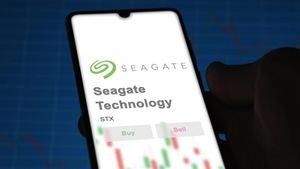
As of November 2025, the stock market finds itself in a peculiar and exhilarating phase, where the "Fear of Missing Out" (FOMO) has emerged as a dominant psychological force, significantly influencing investor behavior and propelling market gains. This pervasive sentiment, amplified by an era of readily accessible information and social media influence, is driving a speculative surge, particularly within high-growth sectors. Investors, both seasoned and novice, are increasingly caught in a self-reinforcing cycle where rising prices validate enthusiasm, drawing in more capital and pushing valuations to elevated levels.
This current market dynamic reflects a "late-stage bull run" characterized by a potent mix of optimism, speculative activity, and a fading fear of losses. While robust economic data and strong corporate earnings in certain sectors provide a fundamental backbone, the emotional pull of FOMO is undeniably accelerating momentum. The allure of quick gains and the perceived penalty of sitting on the sidelines are encouraging risk-taking, often at the expense of traditional fundamental analysis, leading to a market environment ripe with both opportunity and potential peril.
The Speculative Tide: Unpacking Recent Market Rallies
The current market landscape is replete with examples where FOMO has played a pivotal role in driving significant stock performance. A key characteristic of this period is the rapid appreciation of certain assets, often detached from their immediate underlying fundamentals, as investors rush to secure positions. This phenomenon is particularly evident in the technology and artificial intelligence (AI) sectors, as well as in more speculative corners of the market.
One striking example is Palantir Technologies (NYSE: PLTR), which has seen an "explosive rise" of 156% year-to-date as of early November 2025. Despite an exceptionally high trailing price-to-earnings (P/E) ratio of 688.53, the stock has gained a "memetic texture," attracting speculative commitments fueled by classic FOMO psychology. Similarly, NVIDIA (NASDAQ: NVDA) continues its strong ascent, underpinned by a robust outlook for GPU demand in the AI sector. While its fundamentals are strong, the sheer difficulty in quantifying future demand has led to FOMO driving significant portions of its advance, with bullish announcements often priced in well before earnings reports. The influence of social media was starkly demonstrated in October 2025, when Beyond Meat (NASDAQ: BYND) experienced an astonishing 1,600% surge in its stock price over just four days, primarily attributed to misinformation circulating on social media and the subsequent FOMO among "meme stock investors," rather than any substantial improvement in its business fundamentals. This highlights the speed and irrationality that FOMO can inject into market movements.
The "Magnificent Seven" stocks—a group of mega-cap technology giants including Apple (NASDAQ: AAPL), Microsoft (NASDAQ: MSFT), Amazon (NASDAQ: AMZN), Alphabet (NASDAQ: GOOGL), Tesla (NASDAQ: TSLA), Meta Platforms (NASDAQ: META), and NVIDIA—continue to drive the majority of the S&P 500's gains. While their performance is supported by strong AI demand and robust balance sheets, their consistent outperformance also fuels FOMO, as investors chase these high-performing assets to avoid underperforming benchmarks. This dynamic creates a self-fulfilling prophecy, where success begets more success, until market sentiment potentially shifts. Even traditional safe-haven assets are not immune; gold has experienced a record-breaking rally in 2025, with "gold FOMO" inducing investors to purchase gold bars and coins, driven by persistent inflation concerns and geopolitical uncertainties.
Navigating the Volatility: Potential Winners and Losers
In a market influenced by FOMO, identifying potential winners and losers becomes a nuanced exercise, as fundamental strength can be overshadowed by speculative fervor, and vice versa. However, certain trends and company characteristics suggest likely outcomes.
The primary beneficiaries of the current FOMO-driven environment are undoubtedly the large-cap technology companies, particularly those at the forefront of the AI revolution. The "Magnificent Seven" continue to solidify their positions as market leaders, with their strong earnings, innovation, and perceived future growth potential attracting significant capital. Companies like NVIDIA (NASDAQ: NVDA), Microsoft (NASDAQ: MSFT), and Alphabet (NASDAQ: GOOGL) are poised to continue benefiting from the "AI-driven exuberance," as investors are willing to pay a premium for their perceived leadership in this transformative technology. Their robust balance sheets and diversified revenue streams also provide a degree of resilience against potential market corrections. Additionally, companies with strong growth narratives, even if their current profitability is modest, can experience significant share price appreciation due to speculative interest, as seen with Palantir Technologies (NYSE: PLTR).
Conversely, companies that are perceived as having weaker fundamentals, highly speculative business models, or those that become targets of social media-driven pumps without underlying substance, are at significant risk. While they might experience meteoric, short-lived rallies fueled by FOMO, as seen with Beyond Meat (NASDAQ: BYND), they are highly susceptible to sharp corrections once the speculative interest wanes or misinformation is debunked. Investors who chase these "meme stocks" without thorough due diligence risk substantial capital losses. Furthermore, traditional value stocks or companies in slower-growth sectors might find themselves overlooked, as capital flows disproportionately into the high-flying, FOMO-fueled segments of the market. This can lead to a widening divergence in valuations, making a broad market correction potentially more impactful on overvalued growth sectors.
Broader Implications: A Market at a Crossroads
The pervasive influence of FOMO in the stock market extends beyond individual stock performance, shaping broader industry trends and raising significant questions about market stability and regulatory oversight. This period of "AI-driven exuberance" and speculative activity fits into a pattern of historical market cycles, drawing comparisons to past bubbles.
The current market environment, with its elevated valuations and speculative surges in specific sectors, bears a resemblance to the dot-com bubble of the late 1990s. In both instances, revolutionary technology (the internet then, AI now) fueled immense optimism and a willingness among investors to overlook traditional valuation metrics in pursuit of future potential. This can lead to the formation of speculative bubbles, where assets become significantly overvalued, making the market vulnerable to sharp corrections. The "late-stage bull run" narrative suggests that while gains may continue in the short term, the underlying risks are accumulating. The concentration of market gains in a few mega-cap stocks also raises concerns about market breadth and the overall health of the economy.
The role of social media in amplifying FOMO and facilitating "herd behavior" presents potential regulatory challenges. The rapid spread of misinformation, as seen with the Beyond Meat rally, highlights the need for vigilance regarding market manipulation and investor protection in the digital age. Regulators may face increasing pressure to address the impact of social media on market integrity and to ensure that retail investors are adequately protected from speculative excesses. Geopolitical uncertainties and persistent inflation concerns also play a significant role, driving capital into perceived safe havens like gold, which itself has experienced a FOMO-fueled rally. This indicates a complex interplay of fear and greed, where investors are simultaneously chasing high-growth opportunities and seeking refuge from broader economic anxieties.
The Road Ahead: Navigating Uncertainty
As the market continues to grapple with the powerful forces of FOMO and speculative enthusiasm, what comes next remains a critical question for investors and market observers. The short-term outlook suggests continued volatility, with potential for further rallies in high-growth sectors, but also an increased risk of sharp corrections.
In the short term, the "buying the dip" mentality, fueled by FOMO, may persist, leading to continued resilience in market downturns. However, this also means that any significant negative catalysts—such as unexpected economic slowdowns, hawkish central bank pivots, or geopolitical escalations—could trigger more pronounced sell-offs as confidence erodes. The continued strong performance of the "Magnificent Seven" will likely remain a key driver, but their sheer size means any significant revaluation could have a broad market impact. Companies heavily invested in AI innovation will likely continue to attract capital, leading to potential strategic pivots where even traditional businesses seek to integrate AI to capture investor interest.
Longer term, the market will need to reconcile current valuations with sustainable earnings growth. A period of consolidation or a healthy correction might be necessary to normalize valuations and reduce speculative froth. Emerging market opportunities may arise in sectors that are currently overlooked but possess strong fundamentals, as capital eventually seeks more balanced returns. Investors will need to adapt to a potentially more discerning market environment, where fundamental analysis retains prominence over pure sentiment. The ongoing evolution of AI will undoubtedly create new market leaders and disrupt existing industries, requiring continuous adaptation from companies and investors alike. Potential scenarios range from a "soft landing" where the market gradually rebalances, to a more significant downturn if speculative excesses become unsustainable.
Concluding Thoughts: Prudence in a FOMO-Driven Market
The current financial landscape, dominated by the Fear of Missing Out, presents a fascinating and challenging environment for investors. While FOMO has undeniably been a significant driver of stock market gains in late 2025, pushing valuations higher and creating wealth for many, it also introduces substantial risks and underscores the importance of a disciplined investment approach.
The key takeaway for investors is to differentiate between genuine growth and speculative fervor. While the allure of rapid returns is powerful, succumbing entirely to FOMO can lead to irrational decisions, overconcentration in highly volatile assets, and ultimately, significant losses. The market's current dependence on a few mega-cap technology stocks, coupled with speculative rallies in "meme stocks," suggests a fragile equilibrium. Investors should closely monitor corporate earnings, macroeconomic indicators, and geopolitical developments, as these fundamental factors will eventually reassert their influence over market sentiment.
Moving forward, investors should prioritize a well-diversified portfolio, conduct thorough due diligence, and resist the urge to chase every rising stock. A focus on companies with strong fundamentals, sustainable business models, and reasonable valuations will be crucial. The lasting impact of this FOMO-driven period will likely be a heightened awareness of the psychological aspects of investing and the power of social media to shape market narratives. What investors should watch for in the coming months includes any shifts in central bank policy, signs of economic slowdown, regulatory responses to market manipulation, and the continued evolution of the AI landscape. Maintaining a long-term perspective and avoiding emotional decision-making will be paramount in navigating this complex and exciting market.
This content is intended for informational purposes only and is not financial advice





